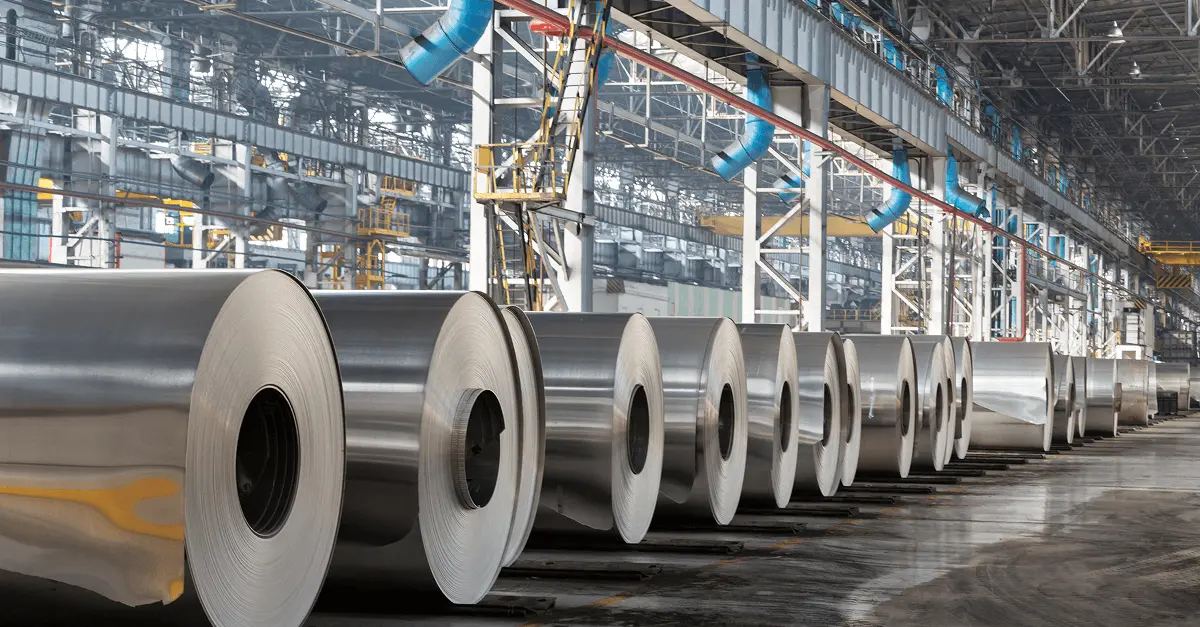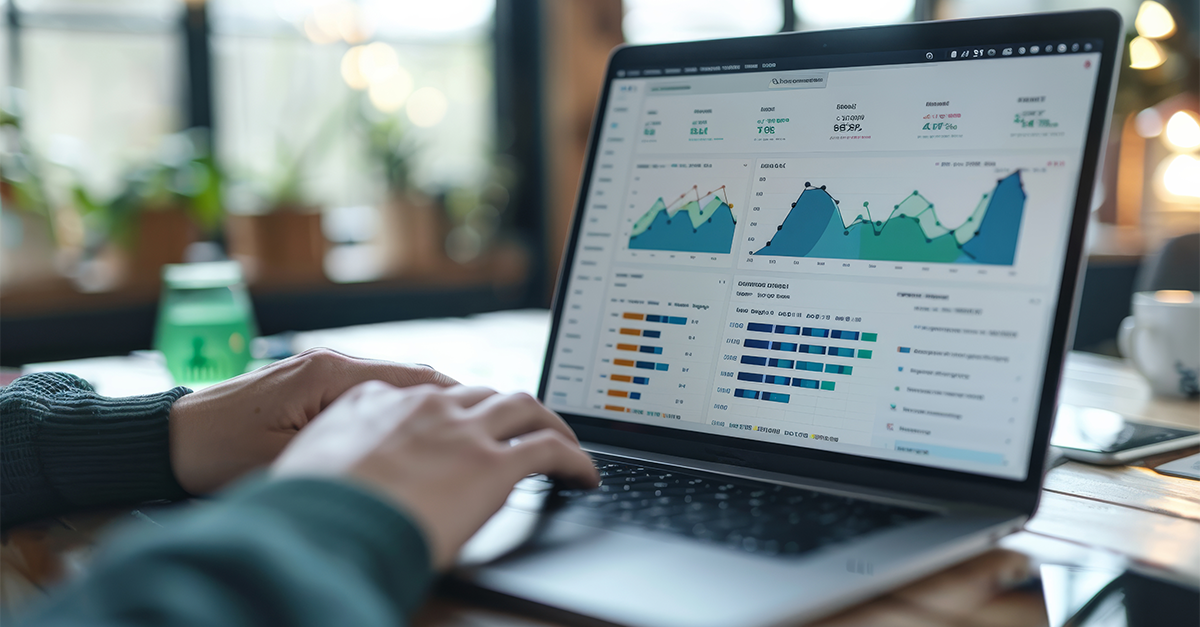Why You Need Supply Chain Visibility for Section 232 Tariffs
Companies need to know about more than just reciprocal tariffs. For many importers, Section 232 is the foundation for critical sectoral tariffs on two key metals.

Article Highlights:
- Shortly after returning to the presidency in 2025, President Trump invoked Section 232 to levy duties on two key metals: in February, his administration imposed 25% tariffs on both steel and aluminum. Several months later, in June 2025, Trump doubled these Section 232 tariffs to 50%.
- On June 28, the Trump administration closed a loophole that had previously allowed importers to declare that the country of smelt, pour, and/or cast for their steel and aluminum imports was unknown without incurring any penalties. After this date, however, companies that don’t know these countries of origin for their metal imports will be assessed the maximum 200% duty rate.
- The Trump administration’s Section 232 tariffs require U.S. businesses importing steel, aluminum, and hundreds of their derivatives to report where the metal that goes into their products is being sourced from. This means collecting supply chain documentation, including mill test certificates, that clearly indicate country of origin, country of smelt, country of cast, and country of melt and pour.
Since coming into office in January, President Trump has implemented a trade regime that deploys tariffs at a level not seen in decades. These tariffs have taken myriad forms—including, most notably, “reciprocal tariffs” aimed at individual countries all over the world. Because of the pomp and circumstance with which they were announced in the spring, and the ongoing drama around trade deals and efforts to secure lower rates, these reciprocal tariffs have garnered most of the media attention.
But sector-specific tariffs have also played an essential role in the Trump administration’s trade platform in 2025. As the federal government has worked to enhance the competitiveness of U.S. companies in a range of key industries, the Commerce Department has imposed several sectoral tariffs aimed at dampening enthusiasm for foreign manufacturers. Two major manufacturing sectors Trump has focused on since launching his trade regime in early 2025 are steel and aluminum. These are each major global industries, with global markets valued at roughly $1.5 trillion and $230 billion, respectively. And the president has targeted these manufacturing sectors using a key provision of the Trade Expansion Act of 1962: Section 232.
What Is Section 232?
A part of the Trade Expansion Act of 1962, Section 232 endows the president with powers to charge import duties on goods if the Department of Commerce finds that those imports threaten U.S. national security. As explained on Congress’s official website, the president may “impose restrictions on goods imports or enter into negotiations with trading partners if the U.S. Secretary of Commerce determines, following an investigation, that the quantity or other circumstance of those imports ‘threaten to impair’ U.S. national security.”
To take advantage of Section 232 of the Trade Expansion Act, in other words, the government must conduct an investigation and determine that specific imports are threatening national security. Following such an investigation, and provided the Department of Commerce returns with a conclusion that the imports in question do, in fact, “threaten to impair” national security, the president may invoke Section 232 to impose tariffs on specific product categories.
How Is Section 232 Currently Impacting Steel and Aluminum?
During Trump’s first term in office, in 2018, he used Section 232 to implement a 25% tariff on steel imports, and a 10% tariff on aluminum imports. Shortly after returning to the presidency in 2025, President Trump again invoked Section 232 to levy duties on the same metals: in February, his administration imposed 25% tariffs on both steel and aluminum. Several months later, in June, Trump doubled these Section 232 tariffs to 50%.
Then, in August, the administration widened the scope of the tariffs to include steel and aluminum derivatives, including forklifts, lawnmowers, bulldozers, and light fixtures. According to Congress’s website, the Department of Commerce “added more than 400 product codes to the previously expanded tariff list.”
Timeline of Section 232 Tariffs
- June 2018: The first Trump administration invokes Section 232 of the Trade Expansion Act of 1962 to impose tariffs on imported steel and aluminum. The tariff rate for steel is set at 25%, while the rate for aluminum is 10%.
- February 2025: Shortly after returning to office for a second term, President Trump resumes the Section 232 tariffs from his previous administration, imposing a 25% levy on both steel and aluminum.
- June 2025: On June 4, President Trump doubled the tariff rate on imported steel and aluminum, to 50%. In documentation released by the White House, the administration framed the tariff increase as a necessary protective measure against metals subsidized by the Chinese government and exported in vast quantities that were flooding global supply chains. The United Kingdom is the only country exempt from the increase: the tariff rate for U.S. businesses importing steel and aluminum from the U.K. remains at 25%.
- June 2025: On June 28, the Trump administration closed a loophole that had previously allowed importers to declare that the country of smelt, pour, and/or cast for their steel and aluminum imports was unknown without incurring any penalties. After this date, however, companies that don’t know these countries of origin for their metal imports will be assessed the maximum 200% duty rate. As Customs and Border Protection outlined in an official CBP bulletin, “When reporting ‘unknown,’ importers will be required to report HTS 9903.85.67 or 9903.85.68, as applicable, and will be assessed the 200 percent Section 232 duties on imports of aluminum from Russia.’ Steel and aluminum imports entering the U.S. without a clear country of smelt/pour/cast are henceforth treated by customs officials as though they were coming from Russia (where the tariff rate is 200%).
- August 2025: The Commerce Department added an additional 407 HTS codes to the list of goods that are considered steel or aluminum derivative products, and thus subject to the Section 232 tariffs.
What Are Country of Smelt, Country of Cast, and Country of Melt and Pour?
In order to comply with the Trump administration’s Section 232 tariffs for steel and aluminum imports, U.S. businesses need to be able to report specific supply chain information. This information includes, most notably, the country of smelt, the country of cast, and the country of melt and pour.
The country of smelt refers to the country where the largest volume of new metal was produced from alumina, or aluminum oxide, via the electrolytic Hall–Héroult process. As many metals are sourced from multiple smelters, the country of smelt refers specifically to the nation where the largest quantity of the metal originated. CBP currently requires U.S. importers to show both the country where the largest volume of metal was smelted, and the country where the second-largest volume of metal was smelted.
The country of smelt refers to the country where the largest volume of new metal was produced from alumina, or aluminum oxide, via the electrolytic Hall–Héroult process.
The country of cast, meanwhile, describes the country where the import was most recently melted down and cast into a solidified form. The International Trade Administration defines country of cast as the country “where the aluminum (with or without alloying elements) was last liquified by heat and cast into a solid state. The final solid state can take the form of either a semi-finished product (slab, billets, or ingots) or a finished aluminum product.”
Finally, the country of melt and pour is required for steel imports and derivative products. This designation refers to the country where the steel is liquified, poured, and cast into a solidified shape.
What Do Importers Need to Know About Their Steel and Aluminum Imports?
Importers are responsible for reporting a specific set of information in order to obtain a license for aluminum imports and aluminum derivative products that fall within the scope of Section 232. This includes—but may not be limited to—the following data:
- Company name and address
- Contact information
- Entry type
- Importer and exporter company names
- Country of origin
- Country of exportation
- Anticipated date of export
- Anticipated date of import
- Anticipated port of entry
- Harmonized Tariff Schedule (HTS) code
- Country where the largest volume of metal was smelted
- Country where the second-largest volume of metal was smelted
- Country where the product was most recently cast
- Quantity
- Approximate customs value
For steel imports, the required information is largely the same. The one key difference is that, instead of reporting on country of smelt and country of cast, importers need to supply information on the country of melt and pour.
Why Supply Chain Visibility Is Critical for Section 232
The Trump administration’s Section 232 tariffs require U.S. businesses importing steel, aluminum, and hundreds of their derivatives to report where the metal that goes into their products is being sourced from. This means collecting supply chain documentation, including mill test certificates, that clearly indicate country of origin, country of smelt, country of cast, and country of melt and pour.
In order to identify and verify this information, however, businesses need supply chain visibility. For many U.S. importers, the manufacturer that smelted, cast, or melted and poured the metal that went into their product is a tier three or even tier four supplier. That means that visibility into tier 1, or direct manufacturers, is not sufficient—organizations need sub-tier visibility to understand their metal sourcing and effectively comply with Section 232. And it’s essential to bear in mind that the stakes associated with supply chain visibility into metal sourcing are significantly higher than they were just six months ago. Reporting an unknown status for country of smelt, cast, and/or melt and pout now triggers a 200% tariff—a costly decision that all importers should be working to avoid.
And it’s essential to bear in mind that the stakes associated with supply chain visibility into metal sourcing are significantly higher than they were just six months ago.
Z2Data Gives Importers Section 232 Visibility
For U.S. businesses with global supply chains, knowing their tier one suppliers and the COO of their imports are no longer sufficient. Companies must also know where the steel and aluminum that go into their products, components, and subassemblies are originating from. The last thing companies want to do in this punitive trade environment is incur an additional 200% tariff, simply because they weren’t able to obtain supply chain documentation for their metal sourcing.
Fortunately, supply chain risk management (SCRM) platforms like Z2Data can be powerful resources for businesses working to comply with Section 232. Z2Data’s experienced teams can conduct comprehensive supply chain due diligence, reaching out to suppliers to obtain information on:
- Material composition
- Country of origin for raw material inputs
- Country of melt and pour
- Country of smelt
- Country of cast
- Certificates of origin
- Mill certificates
With Z2Data’s compliance expertise and supply chain visibility, importers can secure all the supply chain intelligence they need to avoid unnecessary costs and shine a light deeper into their supply chains. To learn more about Z2Data and how its Section 232 insights can help organizations maximize their compliance and reduce tariff burdens, schedule a free trial with one of our product experts.
The Z2Data Solution
Z2Data’s integrated platform is a holistic data-driven supply chain risk management solution, bringing data intelligence for your engineering, sourcing, supply chain and compliance management, ESG strategist, and business leadership. Enabling intelligent business decisions so you can make rapid strategic decisions to manage and mitigate supply chain risk in a volatile global marketplace and build resiliency and sustainability into your operational DNA.
Our proprietary technology augmented with human and artificial Intelligence (Ai) fuels essential data, impactful analytics, and market insight in a flexible platform with built-in collaboration tools that integrates into your workflow.


.svg)






